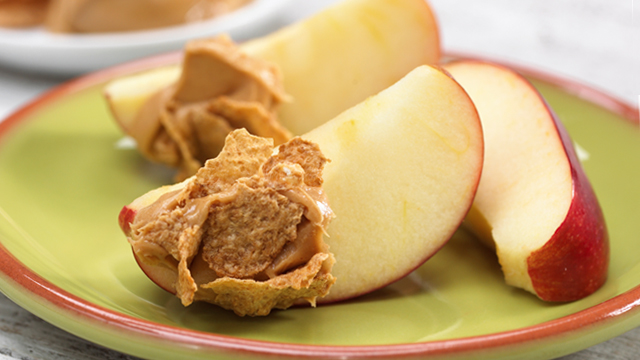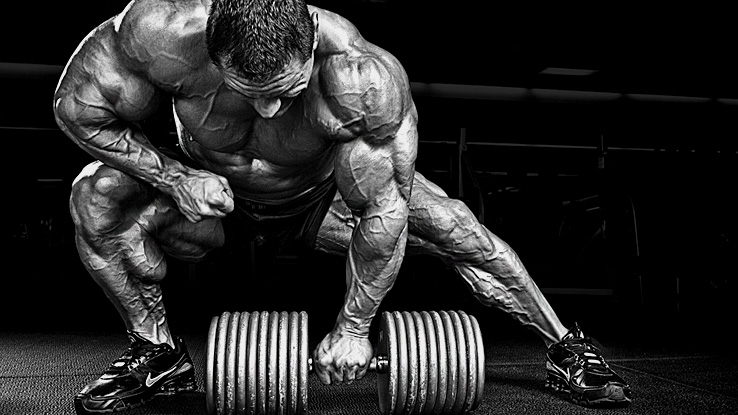Protein is always a hot topic in weight lifting and bodybuilding, but most of the articles or discussions about it center solely on how much to ingest.
Rarely, if ever, have I seen an article that attempts to answer not just that question, but also the other, less-frequently asked questions like how many grams of protein per sitting is best? Or how much protein do I need to ingest while dieting to prevent muscle loss?
Hence this article. While the answers to all those questions will continue to evolve over time, here's what we currently know, or think we know, about protein and muscle.
Typically, protein recommendations are all over the place, with some supposedly college-degreed dietitians even doubting the need for lifters or bodybuilders to ingest any additional protein beyond the RDA (0.8 grams per kilo per day).
This lack of agreement has generally been blamed on widely divergent study participants. Subjects were often of different ages or a specific sex, had different training statuses, different protein intakes, different sources, and different doses.
The best way to come up with some sort of consensus of protein intake, then, is not to look at individual studies of just a few protein-chomping people, but to look at a whole bunch of these studies to see if, collectively, they pointed a meaty finger towards some sort of recommendation.
Robert Morton, a Canadian exercise scientist from McMaster University, did just that. He compiled 49 protein studies comprising 1,863 men and women who'd been lifting weights between 6 and 52 weeks. While no study, meta or not, is definitive, this one begs to be taken seriously based on size if nothing else.
Morton found a distinct relationship between total protein intake and fat-free mass (muscle). He also found that dietary protein supplementation significantly increased one-rep maxes and cross-sectional muscle-fiber area (muscles got bigger).
No real surprises there, but his statistics did show that protein intake beyond 1.62 grams/kilogram didn't result in any further resistance-training related increases in fat-free mass. That means that 1.62 grams/kilogram might be what we should all strive for to maximize our muscle-building efforts.
Converted to pounds, this is what 1.62 grams per kilogram looks like for various body weights:
- 110 grams a day for a 150-pound lifter
- 129 grams a day for a 175-pound lifter
- 147 grams a day for a 200-pound lifter
- 166 grams a day for a 225-pound lifter
But as specific as this 1.62 grams/kilogram top-end protein requirement is, there are probably outliers among us who would gain even more mass with even larger amounts of protein. Not everyone fits into a neat, tidy little protein window.
Still, this number seems to be a good target for the vast majority of us to shoot for.

It used to be that one of the oldest and most persistent "truisms" of bodybuilding was that you couldn't absorb more than 20 to 25 grams of protein in a single sitting. This belief, more than anything, probably gave rise to the seemingly universal bodybuilding habit of eating six or more meals a day.
How and why this belief came about is a mystery. No one, layperson or researcher, has been able to find any scientific evidence for this protein "speed limit." Nevertheless, most bodybuilders have put on their dietary seat belts and abided by this limit for as long as practically anyone can remember.
Luckily, we now have research that allows us to blast through this mythical protein barrier, thanks to the work of sometime T Nation contributors Brad Schoenfeld and Alan Aragon.
The scientists, after conducting a meta-study on the topic, concluded that lifters interested in maximizing muscle protein synthesis should consume protein at a minimum rate of 0.4 g/kg per meal – spread across a minimum of four meals – in order to reach a minimum daily goal of 1.6 grams of protein per kilogram.
Here's what that looks like for various body weights:
- A 150-pound lifter would need to eat about 27 grams of protein per meal for 4 total daily meals.
- A 175-pound lifter would need to eat about 31 grams of protein per meal for 4 total daily meals.
- A 200-pound lifter would need to eat about 36 grams of protein per meal for 4 total daily meals.
- A 225-pound lifter would need to eat about 41 grams of protein per meal for 4 total daily meals.
In the past, many researchers, in accordance with the old 20-25 gram per meal barrier, believed that any amount of protein beyond this amount was oxidized for energy or transaminated (a chemical reshuffling of amino acids) to form different compounds.
Schoenfeld and Aragon argue a different fate for "excess" protein. Following the digestion of a meal, the constituent amino acids (AA) are transported through specialized cells into hepatic portal circulation and the AA that aren't sucked up by the liver enter the bloodstream where they're free for the pickin' to any body tissues that want them.
And while the two scientists acknowledge that, at some point, consumption of higher protein doses does indeed result in greater AA oxidation, it's certainly not the fate of all additional ingested AAs.
Anyhow, they concluded that it's a "relatively simple and elegant solution to consume protein at a target rate of 0.4 g/kg/meal across a minimum of four meals..."

Dieting reduces fat storage, of course, but it also robs you muscle unless you keep protein intake high. Yeah, everybody knows that. Sort of. Unfortunately, few people really think about it seriously. The end fate of most dieters is an unacceptable amount of muscle loss. Rather than looking better, dieters often end up looking like slightly smaller, still blobby versions of their fat selves.
The truth is you need to eat even more protein during dieting than you do to build muscle. Otherwise, the muscle gremlins come to you at night and steal your muscle, pajama bottoms, and any loose change you left on the nightstand.
British scientists recruited 20 bodybuilders between the ages of 18 and 40 to figure out just how much protein dieters need. Prior to the study, these 20 bodybuilders ingested about 1.6 grams of protein per kilogram (for a 200-pound bodybuilder, that equals about 145 grams of protein) per day.
All subjects were put on diets where they consumed 40% fewer calories than they normally burned each day. To accomplish this, the first group of bodybuilders just ate less of what they normally ate. Proportionately, their protein intake fell to about 1 gram per kilogram per day.
The second group of dieters substituted protein shakes for carbs and fats and increased their daily protein intake to 2.3 grams per kilogram (about 207 grams for our hypothetical 200-pound lifter).
The group that ate 2.3 grams of protein per kilogram lost hardly any muscle mass; virtually all of their weight loss was comprised of fat.
The lower protein group, however, lost virtually equal amounts of fat and muscle.
While the dieting didn't affect the 1 RM (the most weight they could lift for one rep) bench press of either group, the high-protein group managed to do a few more reps at 60% of 1 RM. While the low-protein diet reduced dieter's levels of free testosterone by 26%, the high-protein group only experienced a 7% reduction.
Here's what that 2.3 grams of protein per kilogram would look like, converted to pounds, for various body weights:
- A 150-pound dieter would need to eat roughly 156 grams of protein per day to maintain muscle.
- A 175-pound dieter would need to eat roughly 184 grams of protein per day to maintain muscle.
- A 200-pound dieter would need to eat roughly 209 grams of protein per day to maintain muscle.
- A 225-pound dieter would need to eat roughly 235 grams of protein per day to maintain muscle.
Clearly, preserving muscle mass during a diet is a much more daunting (and much more important) task than most of us realized.

When it comes to evaluating the quality of a protein, it all comes down to bioavailability and amino acid profile. Plant protein is currently riding a small, somewhat choppy wave with certain deodorant-eschewing, patchouli-wearing consumers, but the amino acid profile of plants isn't the same as what you'd find in human muscle.
Sure, most of the amino acids are there, but usually not in the amounts you'd need to support optimal growth of muscle.
That being said, there are a couple of plant proteins that come close to containing all the amino acids needed by humans: pea protein and soy protein. Based on the DIAAS (digestible indispensable amino acid scores) scale, pea and soy get scores of 0.822 and 0.902, respectively, while whey protein isolate and milk protein concentrate score a superior 1.09 and 1.18 (higher is better).
Beef protein powders aren't all that common and chicken-based protein powders are even rarer, but they do seem to have a loyal customer base consisting mostly of Paleo-diet types. The assumption is that these proteins, being made from the meat of actual animals, are highly suited to building muscle in people who use them.
Not so much. These proteins, in addition to meat, often contain a great deal of bone, tendons, other connective tissues, and bits of whatever cowbell the animal was wearing when slaughtered. What you're getting is a lot of boiled down collagen – basically Jell-O without the food coloring.
Any way you carve it, whey isolate and milk proteins (casein, specifically) appear to be the best for muscle-building purposes, regardless of what scale you use.
Traditionally, whey protein isolate has been used for peri-workout periods as it's absorbed rather quickly, whereas casein is often preferred for all other times as it digests slowly and supplies a steady stream of amino acids. Casein also has the edge in plain old muscle building. Of course, whey protein also contains some interesting immunoglobulins that appear to contribute to human health.
Given all that, it looks like a blend of fast-acting whey protein isolate and slow-digesting casein (as found in Metabolic Drive® Protein) is best for strength athletes and physique athletes.

- Marinangeli CPF et al. Potential impact of the digestible indispensable amino acid score as a measure of protein quality on dietary regulations and health. Nutr Rev. 2017 Aug 1;75(8):658-667. PubMed.
- Mathai JK et al. Values for digestible indispensable amino acid scores (DIAAS) for some dairy and plant proteins may better describe protein quality than values calculated using the concept for protein digestibility-corrected amino acid scores (PDCAAS). Br J Nutr. 2017 Feb;117(4):490-499. PubMed.
- Mettler S et al. Increased protein intake reduces lean body mass loss during weight loss in athletes. Med Sci Sports Exerc. 2010 Feb;42(2):326-37. PubMed.
- Morton RW et al. A systematic review, meta-analysis and meta-regression of the effect of protein supplementation on resistance training-induced gains in muscle mass and strength in healthy adults. British Journal of Sports Medicine. 2018;52:376-384.
- Schoenfeld BJ et al. How much protein can the body use in a single meal for muscle-building? Implications for daily protein distribution. J Int Soc Sports Nutr. 2018 Feb 27;15:10. PubMed.
- Wolfe R et al. Protein quality as determined by the Digestible Indispensable Amino Acid Score: evaluation of factors underlying the calculation. Nutr Rev. 2016 Sep;74(9):584-99. PubMed.





